[PConline Culture] A range hood is an essential appliance in any modern kitchen. It efficiently removes harmful pollutants and cooking fumes generated during the cooking process, ensuring a cleaner and healthier environment for those in the kitchen. However, when choosing a range hood, should air volume alone be the only factor to consider? Definitely not. According to the new national standards introduced in recent years, key factors such as air volume, wind pressure, noise level, odor removal efficiency, and grease separation are all important criteria for evaluating the performance of a range hood. In this article, we'll break down these five key factors and guide you on how to choose the right range hood for your home.

The primary function of a range hood is to quickly extract cooking smoke and oil vapors produced during the cooking process. The faster the suction speed, the better the performance, as it reduces the time people are exposed to harmful fumes. While design and motor quality play a role, air volume and wind pressure are the most significant factors influencing the hood's effectiveness. For consumers, air volume has long been the most familiar parameter, often used by manufacturers as a key selling point. This has led many to believe that higher air volume means a better product. However, this isn't always the case. As air volume increases, so does the noise generated by the motor, which can affect user comfort. Therefore, it's crucial to also evaluate the noise reduction capabilities of the hood. After all, no one wants to cook in a noisy environment filled with heat and sound.

According to the latest national standards, the minimum wind pressure of a range hood should be at least 80Pa. Higher wind pressure means stronger suction and better exhaust performance. If your kitchen has a longer exhaust duct, or if the flue is located far away from the hood, or if you live on a higher floor, you should opt for a model with higher wind pressure to ensure that smoke is effectively expelled and doesn’t flow back into the kitchen. Currently, most mainstream models offer wind pressure above 300Pa, which is more than sufficient for typical household use.

Noise is another critical factor. The current national standard limits the maximum noise level of range hoods to 59dB, and most modern models operate just below that threshold, around 58dB. However, many manufacturers prioritize increasing suction power to improve smoke extraction, which often comes at the expense of increased noise. This trade-off remains a challenge in the industry, as the fan system is central to the hood’s operation. Theoretically, higher air volume correlates with higher noise levels. Therefore, when selecting a high-performance range hood, it's important to consider both suction and noise levels to find the best balance for your kitchen.
Finally, two other important indicators are odor removal efficiency and grease separation. Odor removal refers to how well the hood eliminates cooking smells, with national standards requiring at least 90% effectiveness within 30 minutes for normal odor removal and over 50% within 3 minutes for instantaneous removal. Grease separation, on the other hand, measures how effectively the hood separates oil and smoke, which is important for environmental protection. The national standard requires a minimum of 80% grease separation. These metrics are vital for both health and environmental impact. Simply focusing on air volume without considering these factors may lead to an incomplete understanding of the product’s true performance. When purchasing a range hood, it's best to look at all these aspects together to ensure a product that offers a great user experience and meets your specific needs.
Sfx Power Supply,Sfx 250W Power Supply,Sfx Pc 150W Power Supply,Psu 150W 200W Power Supply
Boluo Xurong Electronics Co., Ltd. , https://www.greenleaf-pc.com
